
Transportation in the Philippines covers the transportation methods within this archipelagic nation of over 7,500 islands. From a previously underdeveloped state of transportation, the government of the Philippines has been improving transportation through various direct infrastructure projects, and these include an increase in air, sea, road, and rail transportation and transport hubs.

Tacloban, officially the City of Tacloban, is a 1st class highly urbanized city in the Eastern Visayas region of the Philippines. The city is autonomous from the province of Leyte, although it serves as its provincial capital. According to the 2020 census, Tacloban has a population of 251,881, making it the most populous city in the Eastern Visayas. The city is located 360 miles (580 km) southeast from Manila.

Tandag, officially the City of Tandag, is a 5th class component city and capital of the province of Surigao del Sur, Philippines. According to the 2020 census, it has a population of 62,669 people.
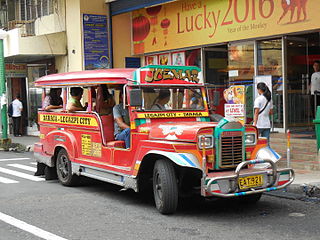
Jeepneys, sometimes called jeeps, are minibus-like public utility vehicles, serving as the most popular means of public transportation in the Philippines.They are known for their crowded seating and kitsch decorations, which have become a widespread symbol of Philippine culture and art. A Sarao jeepney was exhibited at the Philippine pavilion at the 1964 New York World's Fair as a national image for the Filipinos.
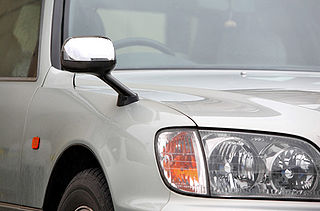
Japanese domestic market (JDM) refers to Japan's home market for vehicles and vehicle parts. Japanese owners contend with a strict motor vehicle inspection and grey markets.

A kalesa or calesa is a two-wheeled horse-drawn carriage used in the Philippines. It is commonly vividly painted and decorated. It was a primary mode of public and private transportation during the Spanish colonial era of the Philippines, though in modern times, they largely only survive as tourist attractions.

Hilongos, officially the Municipality of Hilongos, is a 2nd class municipality in the province of Leyte, Philippines. According to the 2020 census, it has a population of 64,514 people.

Kananga, officially the Municipality of Kananga, is a 1st class municipality in the province of Leyte, Philippines. According to the 2020 census, it has a population of 59,696 people.
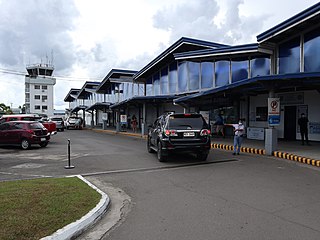
Daniel Z. Romualdez Airport, also known as Tacloban City Airport, is an airport serving the general area of Tacloban, a highly urbanized city in Leyte island in the Philippines. It is the main gateway from Manila and Cebu to Eastern Visayas. It is classified as a Class 1 principal airport by the Civil Aviation Authority of the Philippines, the agency responsible for the operations of all the airports in the Philippines excluding the major international airports. In 2022, Daniel Z. Romualdez Airport served 1.48 million passengers, making it the seventh-busiest in the country.

DYSS-TV is a television station in Metro Cebu, Philippines, serving as the Visayas flagship of the GMA network. It is owned and operated by the network's namesake corporate parent alongside GTV outlet DYLS-TV. Both stations share studios at the GMA Skyview Complex, Nivel Hills, Apas, Cebu City, while DYSS-TV's hybrid analog and digital transmitting facility is located atop Mt. Busay, Brgy. Bonbon.
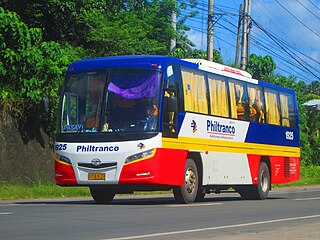
Philtranco Service Enterprises, Inc. is a bus company in the Philippines, servicing routes to Bicol, Eastern Visayas, Caraga, Davao Region, and Northern Mindanao. It is the oldest bus operator in the Philippines and in Asia. It is also the only bus carrier with a nationwide public transport franchise. Philtranco currently has more than 250 buses for its operations.

Taxicabs of the Philippines are one of the modes of transportation in the country. They are regulated by the Department of Transportation (DOTr), the Land Transportation Office (LTO), and the Land Transportation Franchising and Regulatory Board (LTFRB). The taxicabs there vary from models and uses. Most taxicabs have yellow colored license plates, taxi signs, LTFRB Registration number, and taximeter, which is mandatory in every cab.

Balitang Bisdak is a Philippine television news broadcasting show broadcast by GMA Cebu. Originally anchored by Bobby Nalzaro, it premiered on October 4, 1999. Alan Domingo and Cecille Quibod-Castro currently serve as the anchors.

A kei truck, kei-class truck, or Japanese mini truck is a mini truck, a type of pickup truck available in rear-wheel drive or four-wheel drive versions, built to satisfy the Japanese keijidōsha statutory class. They are known as keitora in Japan alongside the microvan.
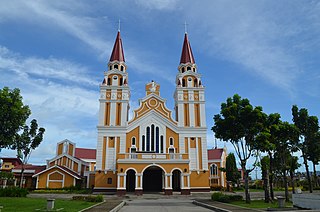
The Roman Catholic Archdiocese of Palo is a large administrative diocese of the Catholic Church in the town of Palo in Leyte province, Philippines. It was formed as a diocese on the 28th of November, 1937, and became an archdiocese in 1982, with Calbayog, Borongan, Catarman and Naval Diocese serving as suffragan to it. The archdiocese encompasses 4,620 km2 (1,780 sq mi) and an overwhelmingly Catholic population of 1,165,565. The archdiocese has two districts, Eastern and Western, which are divided among the languages Waray and Cebuano. The Eastern District has seven vicariates of 34 parishes. 13 parishes are in the Western District, with one chaplaincy. The archdiocese contains two seminaries. The elder of these is the Sacred Heart Seminary, which was founded in 1944. Founded in 1988, the St. John Evangelist School of Theology serves additional dioceses. Jose S. Palma, a priest from the Archdiocese of Jaro and Bishop of the Diocese of Calbayog, Samar was the Archbishop of Palo until he was appointed as Archbishop of Cebu following the retirement of the late Archbishop Cardinal Ricardo Vidal.

In the Philippines, motorized tricycles, or simply tricycles, refer to a type of motorized vehicle consisting of a motorcycle and a passenger cab attached to it. Along with the jeepney, the Philippine tricycle is one of the most common means of public or private transportation in the country, especially in rural areas. These public utility vehicles either ply a set route or are for-hire, like taxis.

In Filipino cuisine, moron is a rice cake similar to suman. It is a native delicacy of the Waray people in the Eastern Visayas region of the Philippines, particularly in the area around Tacloban City in the province of Leyte and in Eastern Samar province. Other parts of the Philippines have their versions of it, however. In fact, the moron was adopted as one of Mambajao, Camiguin's locally produced products.
Transportation within Cebu City is mainly land-based with most parts of the city accessible by road. There is no existing mass transit but construction is currently being undertaken on the Cebu Bus Rapid Transit System as well as an existing proposal for a Cebu Light Rail Transit System, both of which will solve the city's worsening traffic congestion, as existing transportation modes will soon become insufficient to move residents around the city if the local government fails to urgently implement infrastructure projects and measures to address the issue.
COVID-19 community quarantines in the Philippines were series of stay-at-home orders and cordon sanitaire measures that have been implemented by the government of the Philippines through its Inter-Agency Task Force for the Management of Emerging Infectious Diseases (IATF-EID).

Bagong Jeep, also known as the Bagong Jeepney, is a public transport service which maintains a fleet of minibuses and vans which are characterized as jeepneys.




















